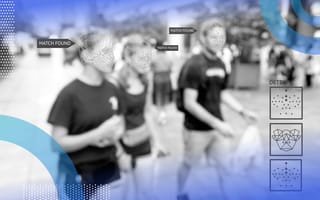Machine learning algorithms consist of three parts: a decision process that makes classifications based on input data, an error function to evaluate predictions and adjust for accuracy and a model optimization process that adds weights to various factors in order to reduce discrepancies between the model’s estimate and the example.
5 Most Popular Machine Learning Algorithms
- Linear regression algorithms are used to estimate real values based on continuous variables. A relationship is established between independent and dependent variables to determine the regression line, represented by the equation Y = aX + b.
- Logistic regression is a classification used to estimate discrete values based on a set of independent variables, which allows us to make predictions about an event's probability of occurring.
- Decision trees are supervised learning algorithms used for classification problems that split a population into two or more homogenous sets.
- Naive Bayes classifiers assume that any given features are unrelated to the presence of other features, thereby asserting independence between predictors.
- K-nearest neighbors (KNN) stores all available cases before classifying new cases to the nearest neighbor with which it shares common functionality.
What Algorithms Are Used in Machine Learning?
Common machine learning algorithms include linear regression, logistic regression, decision trees and more.
- Linear regression algorithms are used to estimate real values based on continuous variables by establishing relationships between independent and dependent variables through the use of a best fit line. The best fit line is what’s known as a regression line and can be determined through the equation
Y=a*X+b, whereYis a dependent variable,ais the slope,Xis the independent variable andbis the intercept. - Logistic regression is used to estimate discrete values based on independent variables, such as yes/no or true/false equations.
- Decision trees are a supervised learning algorithm used for classification problems, especially when working with categorical and continuous dependent variables.
Some other commonly used machine learning algorithms include naive Bayes, KNN, K-Means, random forest, dimensionality reduction and gradient boosting algorithms.
What Are Data Science Algorithms?
Common data science algorithms include several variations of search and sort algorithms.
Understanding how algorithms work in data science requires knowledge of Big O notation, which we use to classify algorithms according to how their run time or space requirements grow with the input size. This proess is crucial for selecting the right algorithms for the right workflow. We typically use data science algorithms to either search through data or sort data elements.
- Simple search involves searching every item until the element of interest is located.
- Binary search begins at the sorted data’s midpoint to compare the target value to the middle value and only searches through the half of the data in which the value is located. This division process continues until the value is located.
- Sort algorithms include selection sort, which goes through a list and appends each element to a new list in the required order.
- Quicksort divides original lists into continuously smaller lists that are then combined to result in a larger, ordered list.
- Mergesort breaks lists into individual elements to create ordered pairs. These pairs are then grouped into ordered groups of four until a final merged list is created.





